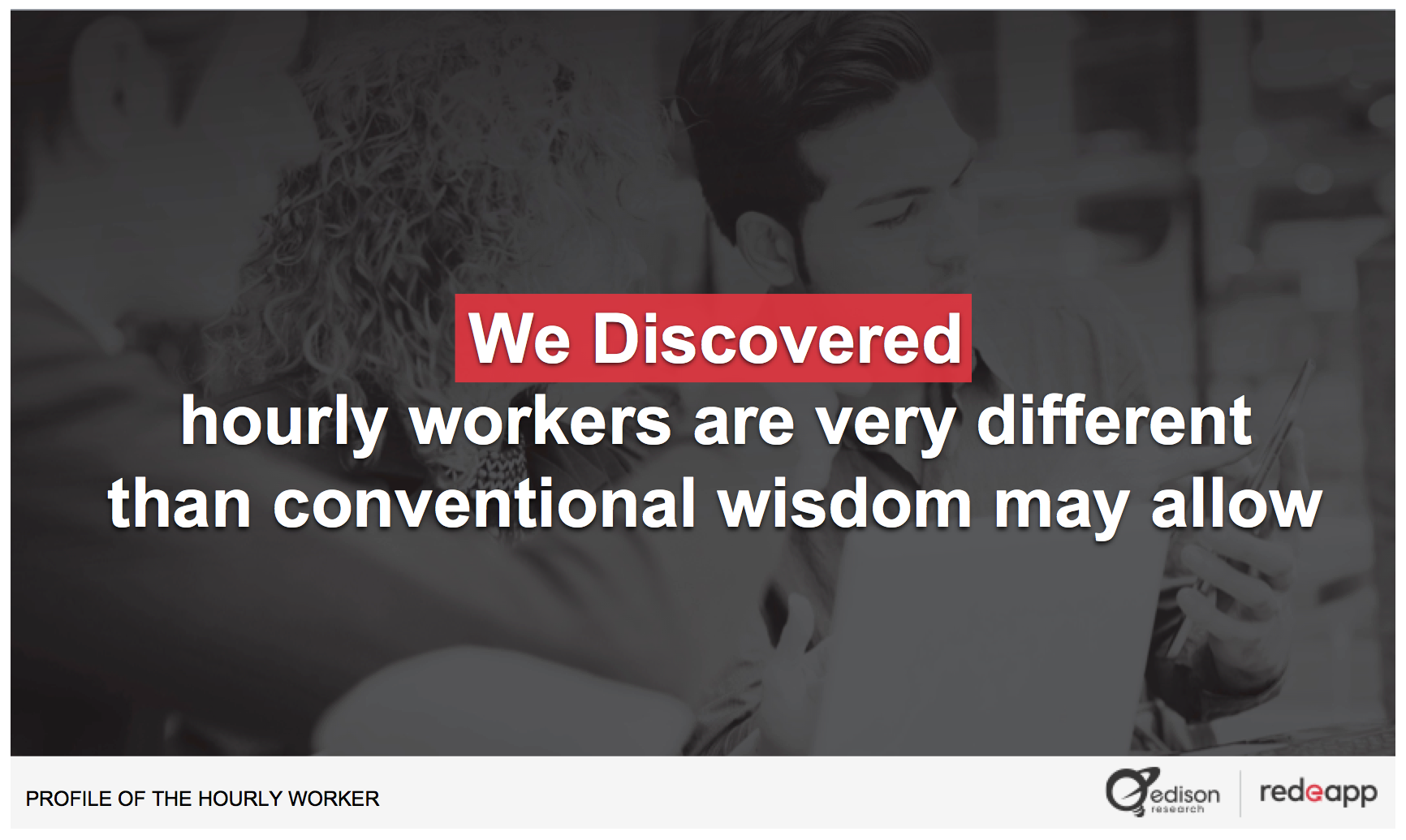Here’s an eye opening insight:
As of 2014, hourly workers make up 56.7 percent of the United States workforce. Think about that for a moment. More than half of all people working the U.S. make an hourly wage. That’s 77.2 million workers aged 16 and up. Yet there is little data to be found about the hourly worker. The U.S. Census publishes a total number of hourly workers and breaks that number down by very broad age characteristics, full-time vs. private sector and race. But that’s all.
The segment is so ignored that even the monthly unemployment report doesn’t categorize the workforce by salary vs hourly. The U.S. Department of Labor recognizes them only in an annual report on minimum wage workers. To understand the majority of laborers in the United States, we are left to guess.”
The surprising makeup of America’s hourly workforce
Redeapp is changing this through the commission of a series surveys and reports from Edison Research. The first, Profile of The Hourly Worker: Demographics, Devices and Disconnection, crossed my desk right before the end of 2015. And it’s pretty interesting.
Redeapp provides private and secure communications platforms that connect companies with their hourly, front-line employees and those without company email access. So they have a vested interest in having a deep understanding of this segment of the workforce.
What they’ve found, in some cases, seems counter-intuitive. Like this, for example:

If the data is to be believed, more than 30 percent of the U.S.’s hourly workforce has one to three years of college or more – with a quarter of them, fully 24 percent, having some graduate credits or an advanced degree!
I would not have expected that 49 percent of our hourly worker population would have a four-year college degree – or a high school degree and some college credits.
They’re also using email — and their personal addresses
Here’s another surprise: Email is used by this segment of the workforce multiple times each day in their general work responsibilities.
But here’s the rub: Only half (50 percent) of this segment have an email address provided by their employer. And 42 percent report that they use their personal email account for work communication either sometimes or often.
How many liabilities and risks can we count here?
Given that scenario, this chart becomes very interesting:
The risk and control issues that exist in an un-secured corporate communication environment are pretty large. Clearly, understanding hourly workers and how to communicate with them is a priority for organizations that employ this segment of the workforce. And perhaps, this segment of the workforce isn’t quite what you pictured.
Take a look at this survey report. It’ll make you think about your communication strategies — in a good way.
